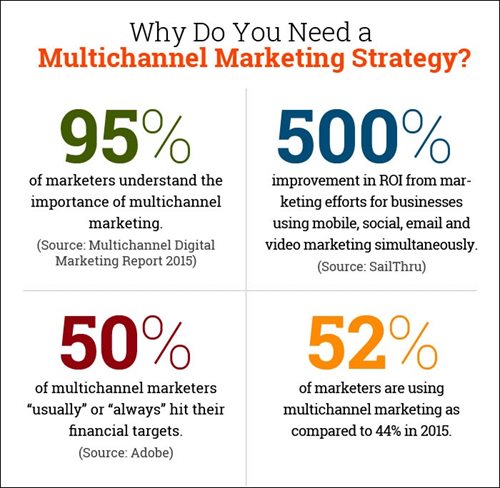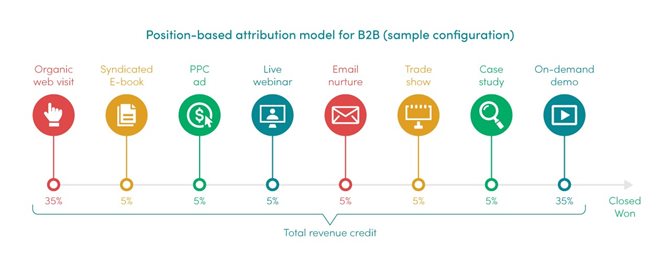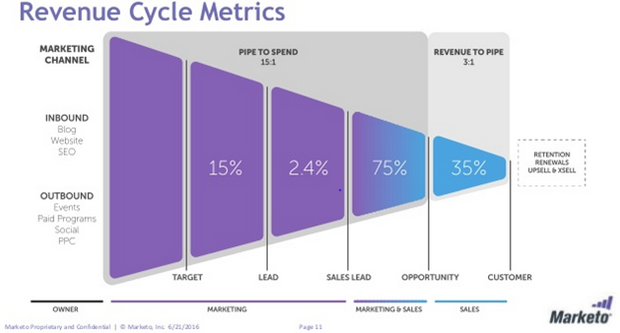Random Acts of Marketing: From Chaos to Consistency
By Janine Olariu
February 11, 2019
Account-Based Marketing, B2B Content Marketing, B2B Marketing, content marketing, Digital Marketing, E-mail Marketing, inbound marketing, marketing, marketing campaign, Marketo, sales, sales cycle
“Persistence is sort of annoying. Consistency, on the other hand, is the happy twin brother of  persistence.”, says Seth Godin, one of the most impactful, modern-day marketing gurus. What common traits do successful marketing projects usually share? “Great leads. Quick sales cycles. Brand recognition. Big ticket deals.”
persistence.”, says Seth Godin, one of the most impactful, modern-day marketing gurus. What common traits do successful marketing projects usually share? “Great leads. Quick sales cycles. Brand recognition. Big ticket deals.”
Do any of these exceptional results come about from a one-off marketing tactic, such as purchasing a huge exhibition space at an industry event, and then bombarding cold leads with a generic follow-up e-mail campaign?
Absolutely not. That is, once again, “sort of annoying”. Okay. So, the logical thing to do would be to link a series of tactics together, then continuously—and consistently—speak to the audience, right? Sounds easy.
However, how many marketing organizations actually have several marketing campaigns running which are:
The current state of marketing is still not where it should be, or could be, given the wealth of data we have access to, and the technology at our disposal—even without a hefty budget.
Gartner has noted that in 2018, more than 90% of marketers struggled to connect more than three communication channels throughout the customer journey. That’s six years down the road from when Marketo, among others, were already blogging about the wealth of benefits that multi-touch marketing and attribution bring with them.
The Whole is Greater than the Sum of its Parts—Even in Marketing
CMOs and marketing teams want visibility into the effectiveness of their campaigns. They are itching to know which tactic (e.g., ebusiness breakfast, whitepaper, webinar, or display ad) has been a “success”. But, what is success? And, has it been defined by marketing in collaboration with the sales department? Is the success measured with well-thought-out calculations, or is the emotional element still high? The danger in focusing only on tactics is that the overall effect of a multi-touch and multichannel campaign is overlooked.
The solution? Stop thinking in tactics. Start thinking in business goals, and the campaigns and technologies needed to achieve these. Then, start executing consistently.

Once, Twice, Three Times a Lead
Let’s assume an organization has KPIs agreed upon, such as annual recurring revenue per target geo percentage split between net new sales (cross as well as upsells), and marketing-sourced vs. sales-sourced revenue. Knowing the average deal size and conversion rates of marketing qualified leads through every part of the funnel—including every phase of an opportunity—it should be a quick calculation to find the necessary MQLs needed to hit the overall targets. With those numbers, a marketer can then determine the mix of tactics needed to collect all of those lovely MQLs. Or, can they?
Rummaging through the CRM or marketing automation reports might leave a marketer with data such as:
- our webinars generate 50 new MQLs each, on average.
- exhibiting at the big annual conference secures us an average of 200 MQLs, 30% of which turn into sales qualified opportunities, etc..
Looking at the calendar, the marketing team then starts pencilling in tactics throughout the months, often based on set dates from external vendors, or requests from sales executives based on their own calendars and assumptions about their territories. Soon enough, the calendar is nice and full, and preparation for each tactic can begin.
But, where are the pitfalls?
- Often, there is no unifying theme to support customers, prospects, and suspects in their journey to a sale. Will that webinar take place soon enough after the big tradeshow to keep the momentum going in a multi-touch campaign? Does its theme build on the keynote from the event? And, is a content item based on that theme already commissioned months before the event to ensure it is ready for the nurture programs needed?
- What are the true measures of success? If the marketing team calculates data from one-off tactics, is the actual impact of the theme clear? What about effectiveness of the tactics in influencing a sale (i.e., marketing-influenced pipeline and revenue)?
Picture This
You’re running an ABM program. The COO of one of your top 20 accounts visits your website, engages on a LinkedIn post, and then downloads your latest e-book. Since we know the average buying committee consist of at least six people (CEB research), the Sales Ops Director and some of his or her team join your webinar. Finally, a month later, the CFO shows up at your tradeshow booth to speak to a sales rep. A quarter later, the deal is done, and the contract is signed.
What’s a marketer to do? Celebrate the website? Sing the praises of the content writer who penned that e-book? What about the sales rep that had the final chat at the tradeshow?
First vs. second vs. third touch attribution; which tactics get the credit? Ideally, a weighted system must be in place to properly measure impact:

According to Forrester Research’s What B2B Marketers Must Know and Do, “Crystallizing a view of the lengthy B2B purchase process and recontextualizing marketing activity as steps leading toward revenue, rather than disconnected conversions, allows B2B marketers to connect the dots along the path to won deals.”
The modern marketing pro, using the right tools and measurements, should then have visibility across a funnel actually showing the marketing channel impact on revenue:

Cadence and Consistency: The Right Messages to the Right Audience at the Right Intervals
CEB research tells us that the average B2B buyer is already 57% through the purchase process before reaching out to sales. Additionally, the average number of decision makers on a typical purchase has increased from 5.4 to 6.8, according to Brent Adamson, Principal Executive Advisor at CEB.
“While many sales organizations are only focused on aggressively bombarding prospects during the last 43% of the buyer's journey (which has become extremely annoying and ineffective), there exists a significant opportunity to get in front of customers before they enter the ‘buying window’."
It’s time to leverage the correct mix of tactics based on a structured multi-channel and multi-touch plan of attack. The focus at all times should remain on the joint marketing and sales goals in line with the company’s targets—leaving no tactic drifting into no-man’s-land, and leaving no lead untouched.

Janine Olariu
Janine is a marketing and sales professional based in Dublin, Ireland, with a history of director roles at SaaS, FinTech and social media companies across Europe. With over 10 years in strategic B2B marketing roles, Janine enjoys sharing her experiences and best practices on demand generation, the customer buying journey and marketing-influenced deal acceleration throughout the sales cycle.